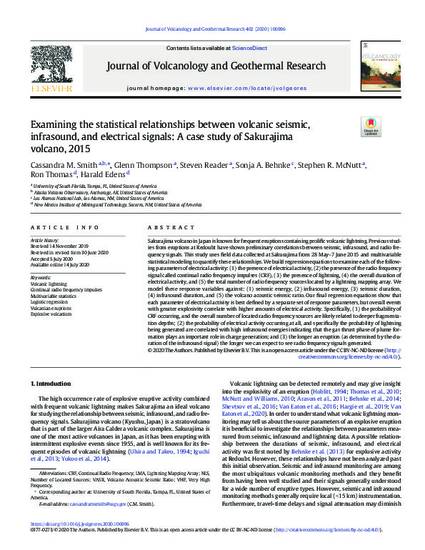
- Volcanic lightning,
- Continual radio frequency impulses,
- Multivariable statistics,
- Logistic regression,
- Vulcanian eruptions,
- Explosive volcanism
Sakurajima volcano in Japan is known for frequent eruptions containing prolific volcanic lightning. Previous studies from eruptions at Redoubt have shown preliminary correlations between seismic, infrasound, and radio frequency signals. This study uses field data collected at Sakurajima from 28 May–7 June 2015 and multivariable statistical modeling to quantify these relationships. We build regression equations to examine each of the following parameters of electrical activity: (1) the presence of electrical activity, (2) the presence of the radio frequency signal called continual radio frequency impulses (CRF), (3) the presence of lightning, (4) the overall duration of electrical activity, and (5) the total number of radio frequency sources located by a lightning mapping array. We model these response variables against: (1) seismic energy, (2) infrasound energy, (3) seismic duration, (4) infrasound duration, and (5) the volcano acoustic seismic ratio. Our final regression equations show that each parameter of electrical activity is best defined by a separate set of response parameters, but overall events with greater explosivity correlate with higher amounts of electrical activity. Specifically, (1) the probability of CRF occurring, and the overall number of located radio frequency sources are likely related to deeper fragmentation depths; (2) the probability of electrical activity occurring at all, and specifically the probability of lightning being generated are correlated with high infrasound energies indicating that the gas thrust phase of plume formation plays an important role in charge generation; and (3) the longer an eruption (as determined by the duration of the infrasound signal) the longer we can expect to see radio frequency signals generated.
Journal of Volcanology and Geothermal Research, v. 402, art. 106996
Available at: http://works.bepress.com/stephen-mcnutt/131/
